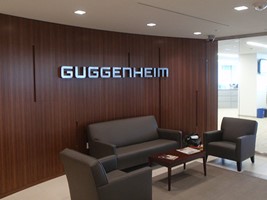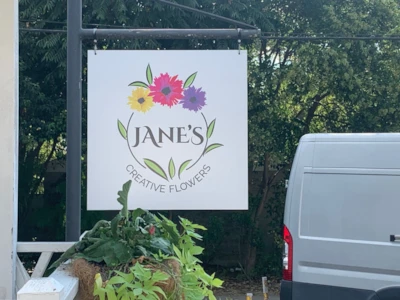
Indoor signs
8/6/2025

Yard signs might seem simple, but they’re surprisingly powerful. Whether it’s promoting a local event, showing support for a cause, or even just advertising a sale, the colors and shapes of those signs can shape how your neighbors view you and your message.
We’re all subconsciously influenced by design, some colors can evoke trust, while others might spark energy or caution. The shape of a sign also plays a role in how it catches the eye or blends into the background.
Understanding this psychology can help you craft a message that resonates in your neighborhood. It’s not just about putting a sign in your yard; it’s about how that sign makes people feel and what it says about you.
Color plays a powerful psychological role in shaping how yard signs are perceived and whether they leave a positive impression in a neighborhood. The right color choices can evoke emotions, establish trust, and drive action, while poor choices may go unnoticed or even be perceived as alienating. Here’s how color impacts the effectiveness of yard signs:
Red: Commands attention and conveys urgency or action. Commonly used in political or sales-related signs, but can feel aggressive if overused.
Blue: Evokes trust, calm, and professionalism. Ideal for service-oriented signs, such as security systems, real estate, or community messages.
Green: Associated with nature, health, and sustainability. Works well for landscaping, organic products, or environmentally friendly campaigns.
Yellow: Grabs attention quickly and feels optimistic. Effective for temporary promotions or events, but should be balanced to avoid being overwhelming.
Black and White: Communicates simplicity and elegance. Often used in high-end neighborhoods or for minimalist branding.
Orange and Purple: These bold colors can convey creativity and energy, but must be used carefully to avoid clashing with the neighborhood's aesthetic.
Ultimately, the colors used in a yard sign help shape first impressions. A sign that aligns with the neighborhood's tone and emotional expectations is far more likely to be welcomed, read, and remembered.
The shape of a yard sign plays a subtle but significant role in how it captures attention and shapes public perception. While color draws the eye, shape helps guide interpretation, impacting how approachable, authoritative, or memorable a sign feels. Here’s how different shapes influence perception:
Rectangular: The most common and familiar shape, this form suggests reliability and professionalism. It’s easy to read and feels structured, making it ideal for political signs, real estate, or service promotions.
Oval or Rounded: Softer shapes convey a sense of friendliness, warmth, and a more gentle approach. These are often used for community events, pet services, or family-friendly promotions.
Arrow-Shaped: Naturally directs the viewer’s gaze and implies movement or direction, making it effective for open houses, event parking, or pointing to a specific location.
Die-Cut or Custom Shapes: Shapes like houses, tools, or mascots instantly grab attention and stand out from the standard. They’re memorable and can reflect branding or service type.
Triangular: Less common, triangles can feel dynamic or urgent, often used to create a sense of motion or to alert.
The shape of a sign isn’t just about aesthetics, it guides emotional response and comprehension. A thoughtfully chosen shape enhances visibility, reinforces message tone, and makes the sign more engaging and effective.
Certain colors on yard signs evoke specific emotional responses because colors are deeply tied to human psychology and cultural associations. Our brains process color quickly, often forming impressions before we even read the message.
These emotional cues can influence trust, urgency, excitement, or calm, making color a powerful tool in communication. Here’s why certain colors trigger particular responses:
Red: Known for its intensity, red stimulates energy and urgency. It draws immediate attention, making it effective for calls to action, but it can also signal aggression if overused.
Blue: Universally associated with trust, stability, and calm. Blue is often used by political candidates and service providers who want to convey reliability and professionalism.
Green: Symbolizes growth, health, and the natural world. It evokes feelings of balance and eco-consciousness, perfect for environmentally focused messaging or landscaping services.
Yellow: Bright and cheerful, yellow stimulates optimism and warmth. It catches the eye quickly but can be overwhelming if not balanced with other colors.
Black: Suggests sophistication, power, and authority. Often used in upscale or minimalist signage, it adds a sense of seriousness and control.
Orange and Purple: These bold hues evoke creativity, enthusiasm, and uniqueness, great for standing out or appealing to a younger audience.
Color isn’t just decoration—it’s an emotional strategy.
Yard sign design can significantly influence community attitudes and even sway decision-making by shaping how messages are perceived, remembered, and emotionally received.
The combination of color, typography, shape, and layout plays a subtle yet powerful role in establishing credibility, relatability, and trust. Here's how design impacts community response:
First Impressions Matter: A well-designed sign immediately communicates professionalism and trustworthiness, while a poorly designed one can be dismissed or ignored entirely.
Emotional Influence: Colors and fonts evoke feelings, such as calmness, urgency, friendliness, or authority, that shape how people emotionally respond to the message.
Visual Clarity Leads to Retention: Clean layouts, legible text, and a focused message increase the likelihood that viewers will remember the sign and take action.
Tone and Messaging: Design choices reflect tone. A warm, inviting design may promote community events, while bold, sharp designs can influence stances on issues like safety or political campaigns.
Social Proof and Unity: When many homes in a neighborhood display similarly designed signs, it creates a sense of unity or consensus, influencing others to align with the perceived majority.
Credibility Boost: High-quality, cohesive designs build confidence in the legitimacy of the message, service, or cause being promoted.
We understand that color and shape aren’t just design choices; they’re psychological tools that influence how your message is received. Whether you're promoting a cause, business, or event, our custom signs are designed to capture attention, establish trust, and leave a lasting impression.
From bold colors to inviting shapes, we help you communicate effectively and make a lasting impression in your community. Let our team bring your vision to life as a sign that speaks volumes, professionally, clearly, and with purpose. Your message deserves to be seen and remembered.